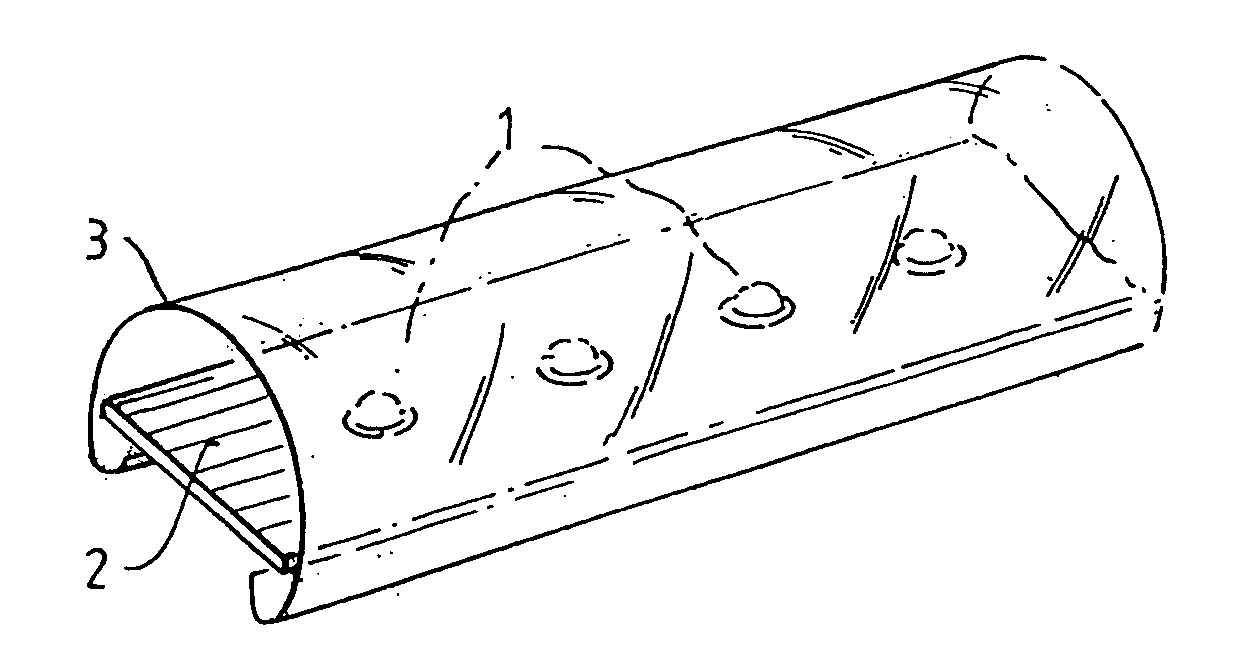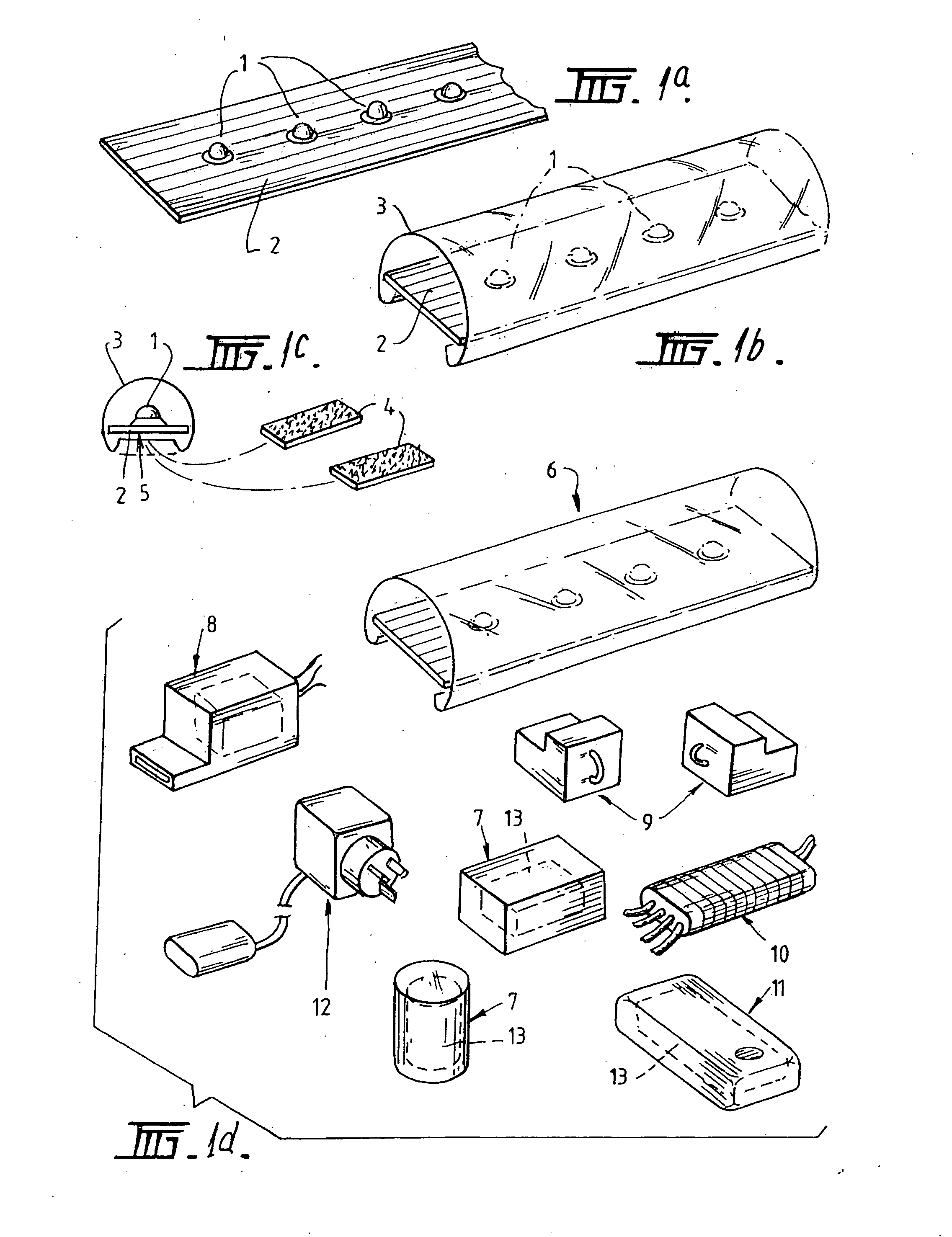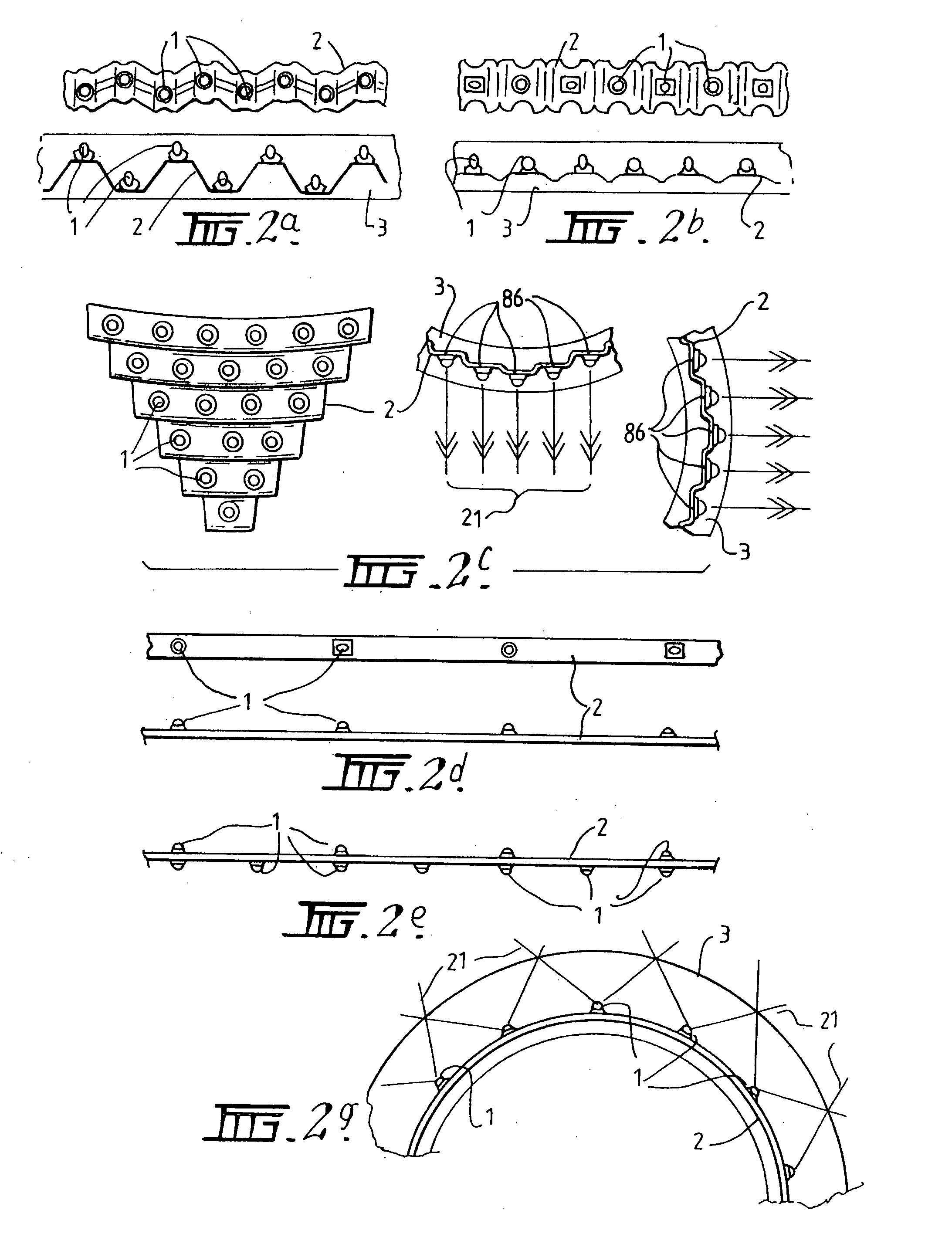Methods and apparatus relating to improved visual recognition and safety
a visual recognition and safety technology, applied in the direction of shade, point-like light source, light support device, etc., can solve the problems of incident scene not providing a suitable or safe position, the problem is obvious the most difficult, and the emergency worker is often required to work in dangerous conditions. , to achieve the effect of high-concentration outpu
- Summary
- Abstract
- Description
- Claims
- Application Information
AI Technical Summary
Benefits of technology
Problems solved by technology
Method used
Image
Examples
Embodiment Construction
[0038] The invention will now be discussed in detail by reference to the following Figures and Legend:
LEGEND
Summary of Numbers Used to Illustrate Drawings
Number Description
[0039]1. Surface Mounted (SMD) high performance LED's [0040]2. Flexible PCB board mounting selected electronic control components. [0041] Maybe pressed, cut, folded, treated, laminated or any combination to improve flexibility. [0042]3. Protective flexible membrane with outer skin, clear, coloured, or with internal coatings. [0043] Maybe finished to diffuse, direct, colour, fluoresce or otherwise alter the LED's light [0044]4. Possible mounting methods: Magnetic tape, Velcro, double sided tape, Adhesive backing, clip or hook or other means. [0045]5. Possible base profile of cover (3) to allow invisible mounting [0046]6. Basic lineal component of LIGHTFINGER, consists of [0047] (1) LED's [0048] (2) PCB with electric components to suit application [0049] (3) Protective flexible membrane with tough skin. [0050]7...
PUM
 Login to View More
Login to View More Abstract
Description
Claims
Application Information
 Login to View More
Login to View More - R&D
- Intellectual Property
- Life Sciences
- Materials
- Tech Scout
- Unparalleled Data Quality
- Higher Quality Content
- 60% Fewer Hallucinations
Browse by: Latest US Patents, China's latest patents, Technical Efficacy Thesaurus, Application Domain, Technology Topic, Popular Technical Reports.
© 2025 PatSnap. All rights reserved.Legal|Privacy policy|Modern Slavery Act Transparency Statement|Sitemap|About US| Contact US: help@patsnap.com



